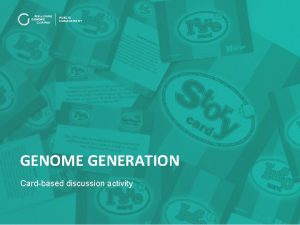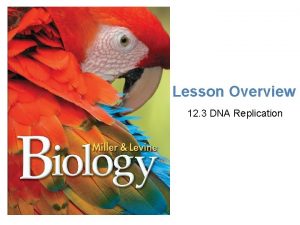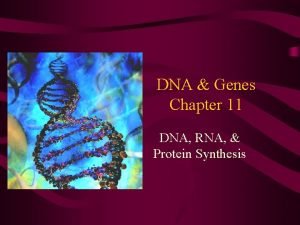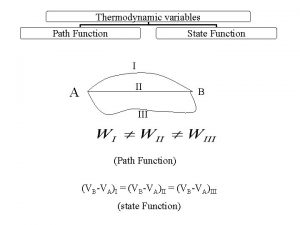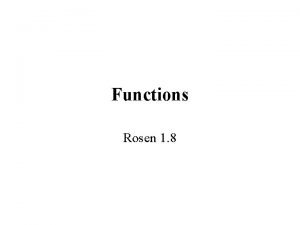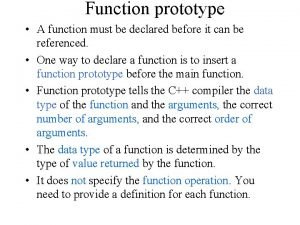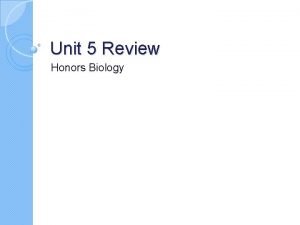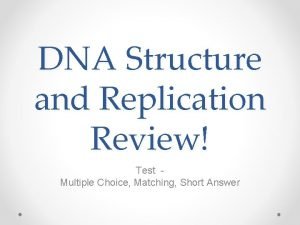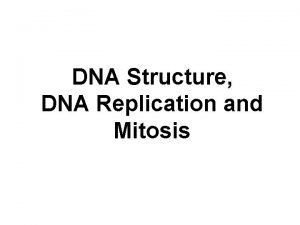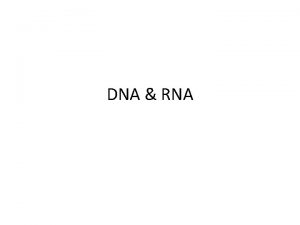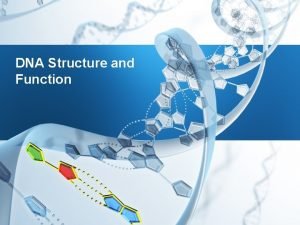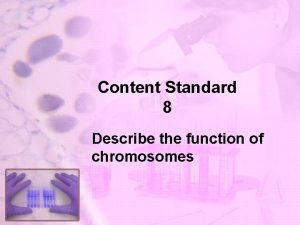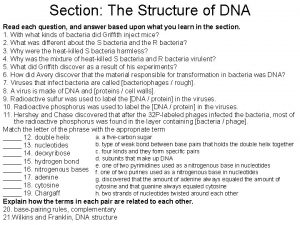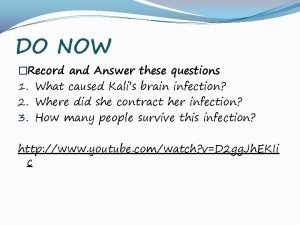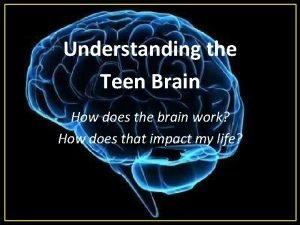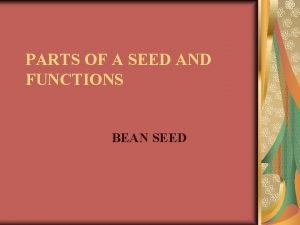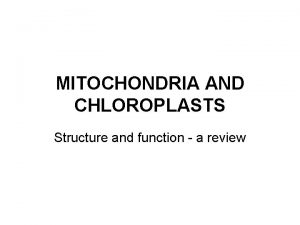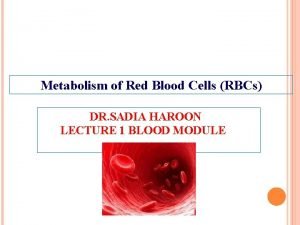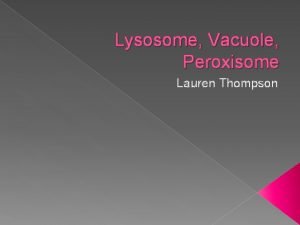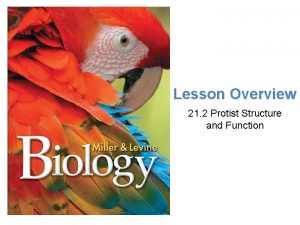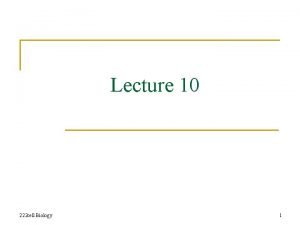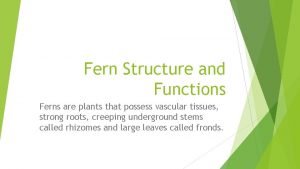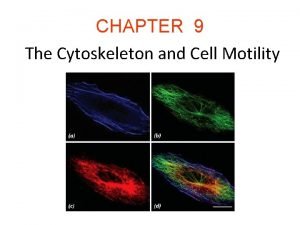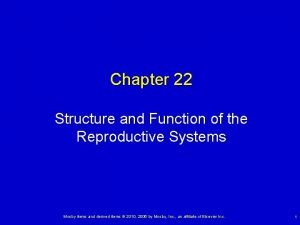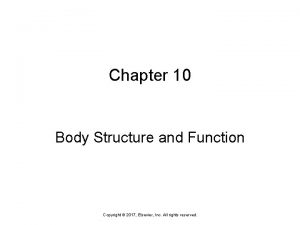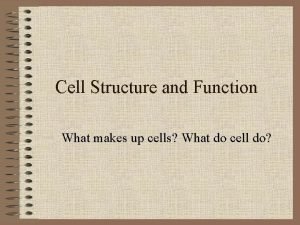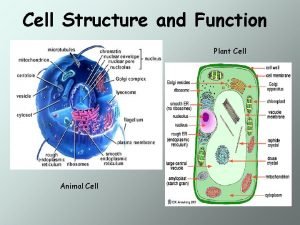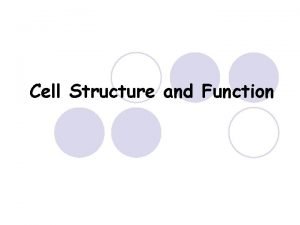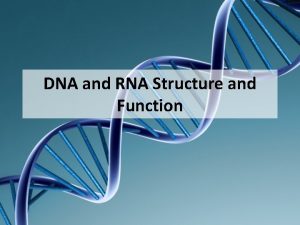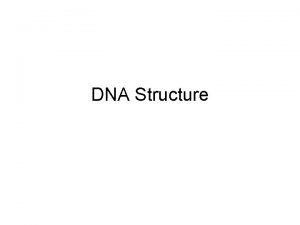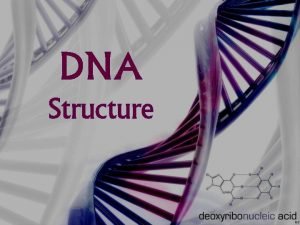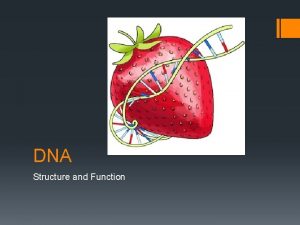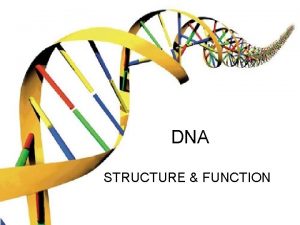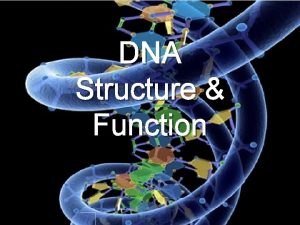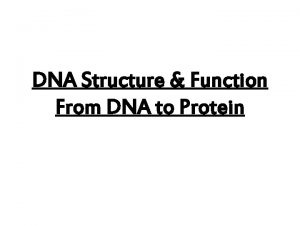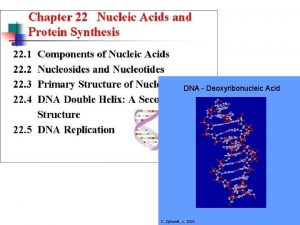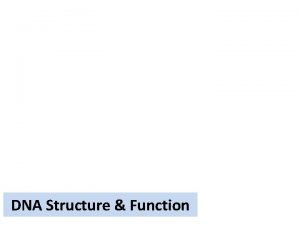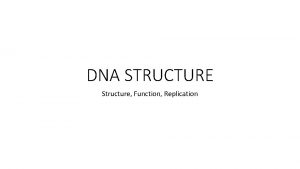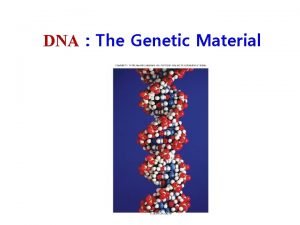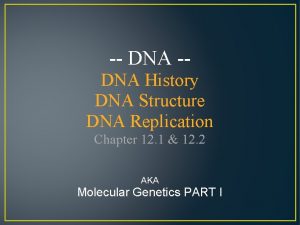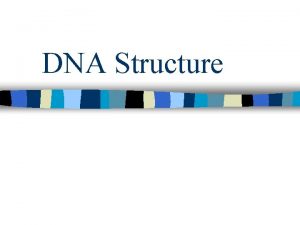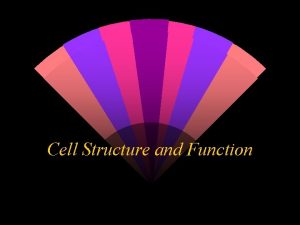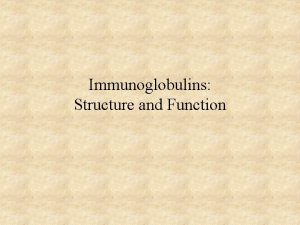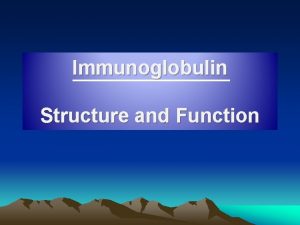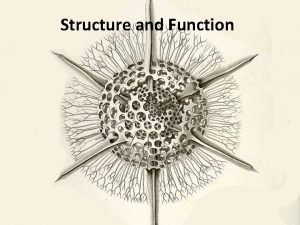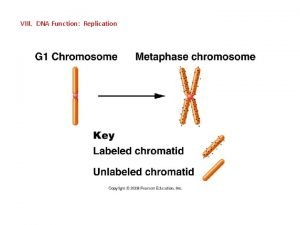DNA Structure and Function DNA Structure DNA is































- Slides: 31

DNA Structure and Function

DNA Structure • DNA is a macromolecule that stores and transfers information in living cells. • It is found in the nucleus of eukaryotic cells and in the cytoplasm of prokaryotic cells. • It is also found in mitochondria and chloroplasts.

DNA Structure • DNA consists of long strands of nucleotides. • Each nucleotide consists of – Deoxyribose (5 -carbon sugar) – Phosphate group – A nitrogen-containing base • Four bases – Adenine, Guanine, Thymine, Cytosine

Nucleotide Bases ADENINE (A) phosphate group GUANINE (G) deoxyribose THYMINE (T) CYTOSINE (C)

Composition of DNA • Chargaff showed: – Amount of adenine relative to guanine differs among species – Amount of adenine always equals amount of thymine and amount of guanine always equals amount of cytosine A=T and G=C

Rosalind Franklin’s Work • Was an expert in x-ray crystallography • Used this technique to examine DNA fibers • Concluded that DNA was some sort of helix

Structure of the Hereditary Material • Experiments in the 1950 s showed that DNA is the hereditary material • Scientists raced to determine the structure of DNA • 1953 - Watson and Crick proposed that DNA is a double helix • http: //nobelprize. org/educatio nal_games/medicine/dna_do uble_helix/

Watson-Crick Model • DNA consists of two nucleotide strands • Strands run in opposite directions • Strands are held together by hydrogen bonds between bases • A binds with T and C with G • Molecule is a double helix

Watson-Crick Model http: //learn. genetics. uta h. edu/units/basics/build dna/

DNA Function • DNA can copy itself - REPLICATION • DNA transfers information to new strands of DNA. • DNA can transfer its information to RNA - TRANSCRIPTION • RNA then translates information into an amino acid sequence - TRANSLATION

DNA Structure Helps Explain How it Duplicates • DNA is two nucleotide strands held together by hydrogen bonds • Hydrogen bonds between two strands are easily broken • Each single strand then serves as template for new strand

DNA Replication • Each parent strand remains intact • Every DNA molecule is half “old” and half “new” new old new

Base Pairing During Replication Each old strand serves as the template for complementary new strand

Enzymes in Replication • DNA helicase unwind the two strands • DNA polymerase attaches complementary nucleotides • DNA ligase fills in gaps • Other enzymes wind two strands together.

A Closer Look at Strand Assembly Energy for strand assembly is provided by removal of two phosphate groups from free nucleotides newly forming DNA strand one parent DNA strand

Continuous and Discontinuous Assembly Strands can only be assembled in the 5’ to 3’ direction. This refers to the number of the carbon of the sugar

DNA Repair • Mistakes can occur during replication • DNA polymerase can read correct sequence from complementary strand and, together with DNA ligase, can repair mistakes in incorrect strand

Steps from DNA to Proteins Same two steps produce ALL proteins: 1) DNA is transcribed to form RNA – Occurs in the nucleus – RNA moves into cytoplasm 2) RNA is translated to form polypeptide chains, which fold to form proteins

Three Classes of RNAs • Messenger RNA – Carries protein-building instruction • Ribosomal RNA – Major component of ribosomes • Transfer RNA – Delivers amino acids to ribosomes

A Nucleotide Subunit of RNA uracil (base) phosphate group sugar (ribose)

Base Pairing During Transcription • A new RNA strand can be put together on a DNA region according to basepairing rules • As in DNA, C pairs with G • Uracil (U) pairs with adenine (A)

Transcription & DNA Replication • Like DNA replication – Nucleotides added in 5’ to 3’ direction • Unlike DNA replication – Only small stretch is template – RNA polymerase catalyzes nucleotide addition – Product is a single strand of RNA

Promoter • A base sequence in the DNA that signals the start of a gene • For transcription to occur, RNA polymerase must first bind to a promoter transcribed DNA winds up again DNA to be transcribed unwinds m. RNA transcript RNA polymerase

Adding Nucleotides 5’ growing RNA transcript 3’ 5’ 3’ direction of transcription

Transcript Modification unit of transcription in a DNA strand 3’ exon intron exon transcription intron 5’ exon into pre-m. RNA poly-A tail 3’ cap 5’ snipped out 5’ 3’ mature m. RNA transcript

Genetic Code • Set of 64 base triplets – ex: AGA CCC • Codons - Nucleotide bases read in blocks of three • 61 of the base triplets specify amino acids • 3 stop codons – UGA, UAG • http: //nobelprize. org/educational_games/medicine /gene-code/how. html

Genetic Code

Genetic Code

Code Is Redundant • Twenty kinds of amino acids are specified by 61 codons • Most amino acids can be specified by more than one codon • Six codons specify leucine – UUA, UUG, CUU, CUC, CUA, CUG

t. RNA Structure codon in m. RNA anticodon in t. RNA amino acid t. RNA molecule’s attachment site for amino acid OH

Ribosomes tunnel small ribosomal subunit large ribosomal subunit intact ribosome
 Function of dna polymerase 3
Function of dna polymerase 3 Coding dna and non coding dna
Coding dna and non coding dna Bioflix activity dna replication lagging strand synthesis
Bioflix activity dna replication lagging strand synthesis The principal enzyme involved in dna replication is
The principal enzyme involved in dna replication is Dna rna protein synthesis homework #2 dna replication
Dna rna protein synthesis homework #2 dna replication Structure and function of community
Structure and function of community Heat capacity is state or path function
Heat capacity is state or path function Find the inverse of function f. a. b. c. d.
Find the inverse of function f. a. b. c. d. What is function prototype
What is function prototype Haploid vs diploid
Haploid vs diploid Dna structure and replication packet answer key
Dna structure and replication packet answer key Dna replication
Dna replication Dna rna
Dna rna What is the function of dna
What is the function of dna Functions of the chromosome
Functions of the chromosome Function of dna
Function of dna Tpurine
Tpurine Brain structure and function
Brain structure and function Bean seed and its parts
Bean seed and its parts What is the function of the chloroplasts
What is the function of the chloroplasts Glutathione structure and function
Glutathione structure and function Function of lysosomes
Function of lysosomes Protist structure
Protist structure Lysosome structure and function
Lysosome structure and function Frond of fern
Frond of fern 3 cytoskeletal elements
3 cytoskeletal elements Breast structure and function
Breast structure and function Chapter 10 body structure and function
Chapter 10 body structure and function Cilia and flagella function
Cilia and flagella function Plant cell and animal cell
Plant cell and animal cell Mitochondria structure and function
Mitochondria structure and function Limbic system structures and functions
Limbic system structures and functions

